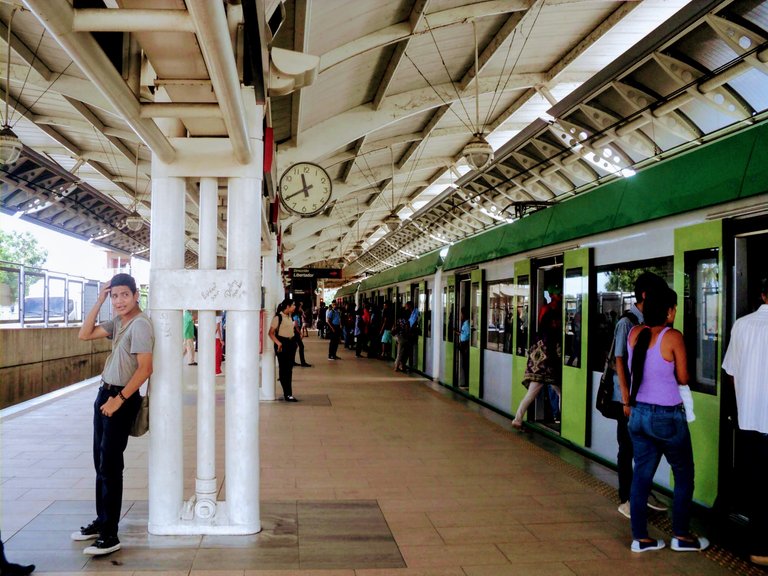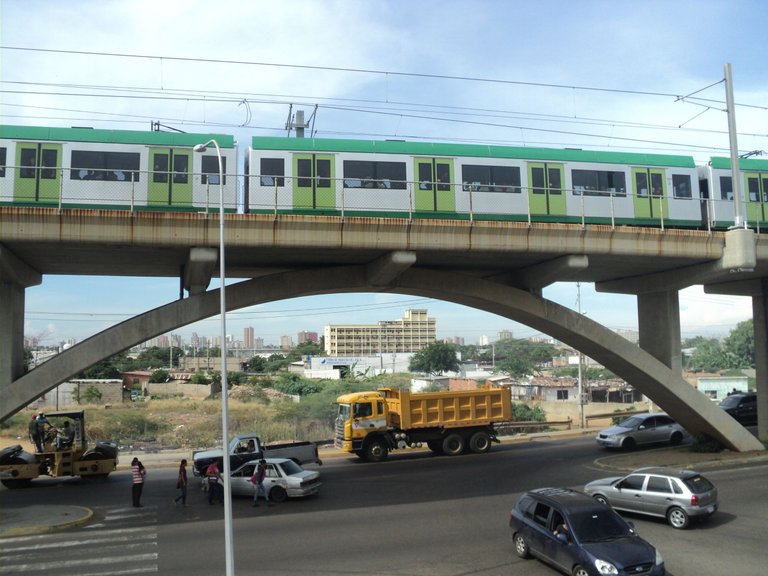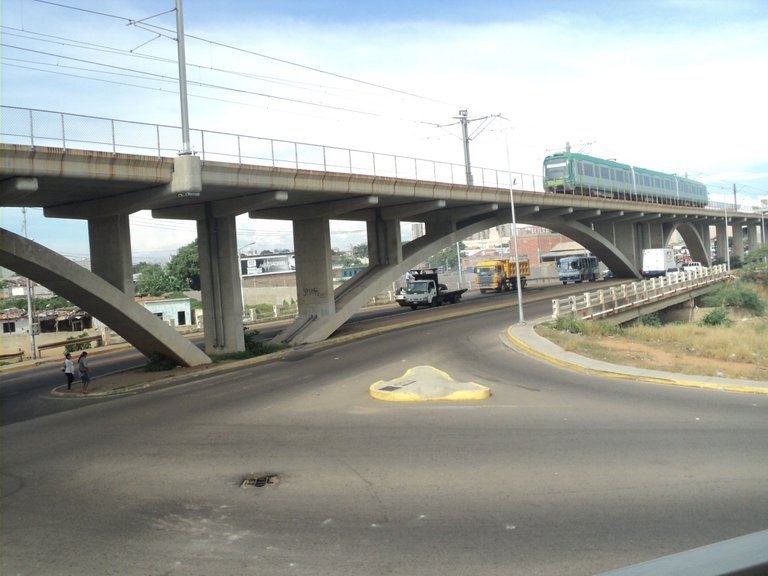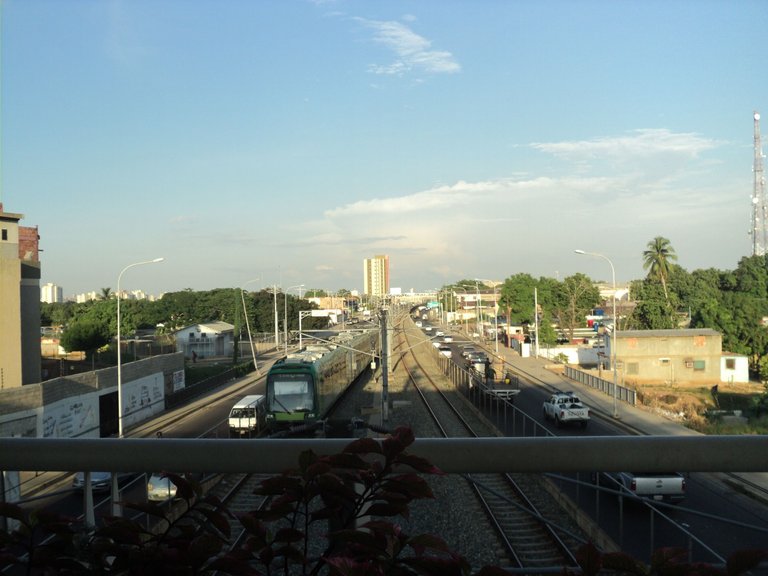By 2006, Venezuela was on the cusp of its advancement in development as a country, that is why the Maracaibo Metro project began to be created to help it with the push that was coming every year and the population demanded it for be in full growth.
Length of the route 6.5 kilometers. Initially, it was thought to continue the construction to continue the route through the main road arteries, but it was stalled in only those kilometers since it was not continued due to the existing problems in the country.

Source: Source: https://es.wikipedia.org/wiki/Metro_de_Maracaibo
It covers only 6 stations, from Altos de la Vanega to Libertador Station. There he would make a link with Padilla and Falcón to continue on July 5 to Curva de Molina.
Half of the railway section is over land and the other half is aerial, running 3 or 4 train cars. It has a small cyclone fence around the edge that prevents animals or people from entering to cross the tracks.
This is the part that had the most difficulty at the time of construction, since under this road there is water that comes from Lake Maracaibo. It turns out that the city had its hydrography of the basin that reached this place, then they filled in to make the avenue and this neighborhood. Because it is a filling site, every time they made the excavations to plant the pillars, water came out and the cement did not dry.
Being a neighbor of the place, I met the Architect who was directing the work and he told us how much it cost him to finish forming the pillars so that the bases would not fall and would be resistant. The company Precoways was in charge of the machines and of bringing Architect Peter from Germany. The Metro de Maracaibo company, owners of the work, had many engineers and architects, but they had no experience.
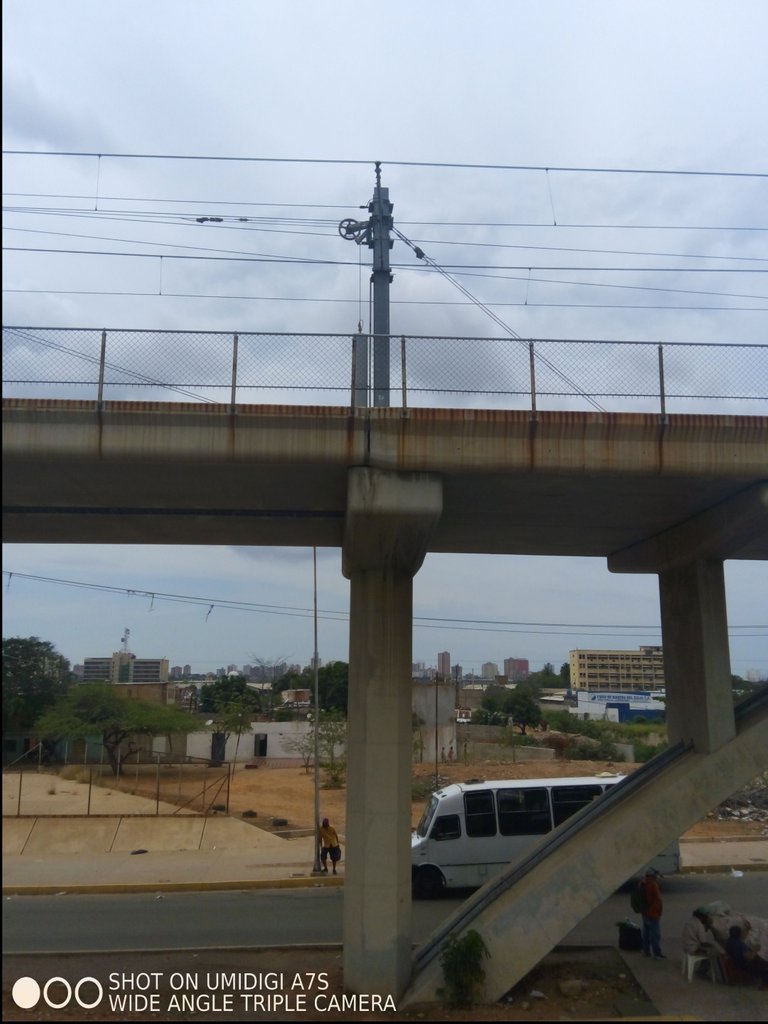
The completion of the train tracks took longer than expected due to the filtration problem, from these pillars each one was shortened every day to be able to continue the work.
On the power lines there is a problem that they have not solved, and that is that every time the wagon comes near these beams it must stop and wait a few minutes so that the train hook does not make so much spark.
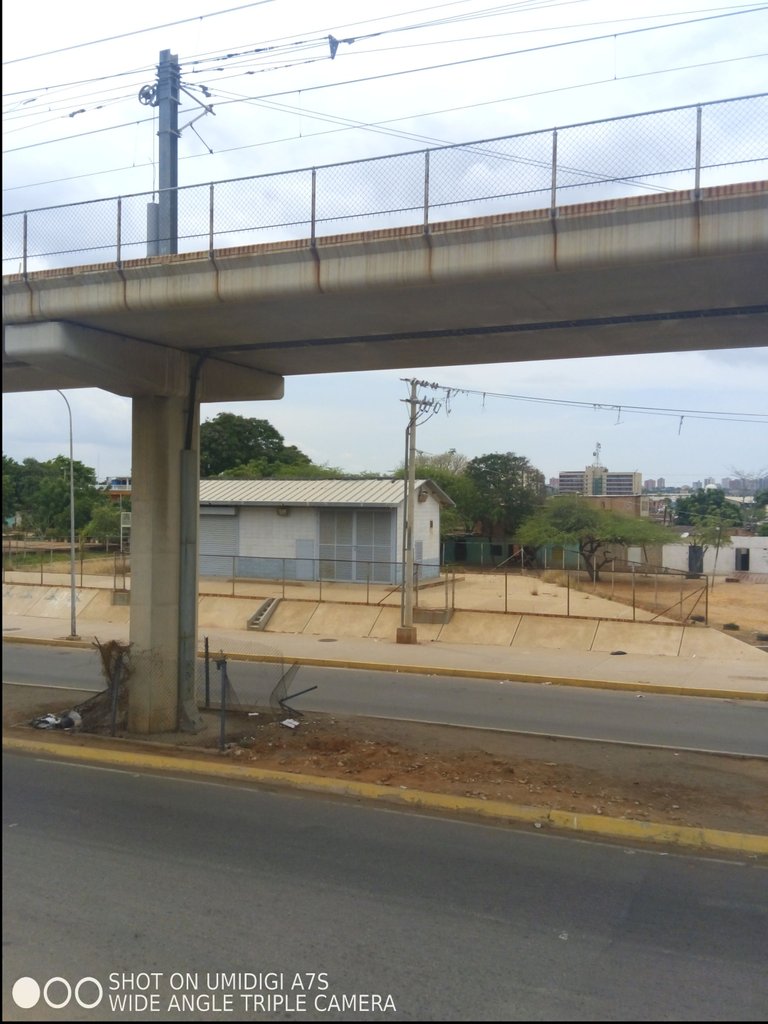
All the electrical part was in charge of the German company Siemens and all the stations have a little house where the electricity panels of this entire section are located, there are 6 arranged in the 6.5 kilometers of distance from the subway.
Hopefully they will complete the project as planned, it is a great help to the city's traffic and gives the city an air of modernity. It is as it should be done in a developed and prosperous country.

Traducción al Español:
Para el año 2006, Venezuela se encontraba en la cúspide de su avance en el desarrollo como país, por eso se comenzó a crear el proyecto del Metro de Maracaibo para que le ayudara a el empuje que se venía cada año y la población lo exigía por estar en pleno crecimiento.
Longitud del recorrido 6,5 kilómetros. Inicialmente se pensó en seguir la construcción para seguir el recorrido por las principales arterias viales, pero se estancó en solo esos kilómetros ya que no se le dio continuidad por los problemas existentes en el país.
Abarca solo 6 estaciones, desde Altos de la Vanega hasta la Estación Libertador. Allí haría un enlace con Padilla y Falcón para continuar por 5 de Julio hasta Curva de Molina.
La mitad del tramo ferroviario es sobre tierra y la otra mitad es aérea, funcionando 3 o 4 vagones de trenes. Tiene por todo el borde una cerca de ciclón pequeña que impide que entren animales o personas para atravesar las vías.
Esta es la parte que más dificultad tuvo a la hora de la construcción, ya que debajo de esta carretera hay agua que viene del Lago de Maracaibo. Resulta que la ciudad tenía su hidrografía de la cuenca que llegaba hasta este lugar, luego rellenaron para hacer la avenida y este barrio. Por ser un sitio de relleno, cada vez que hacían las excavaciones para sembrar los pilares salía agua y el cemento no se secaba.
Siendo vecina del lugar conocí al Arquitecto que dirigía la obra y él nos dijo lo mucho que le costaba terminar de formar los pilares para que las bases no se cayeran y fuera resistente. La empresa Precoways fue la encargada de las máquinas y de traer al Arquitecto Peter desde Alemania. La empresa Metro de Maracaibo, dueños de la obra tenían muchos ingenieros y arquitectos, pero no tenían experiencia.
La culminación de las vías del tren tardó más de lo esperado por el problema de filtración, a partir de estos pilares cada uno era achicado todos los días para poder continuar el trabajo.
Sobre las líneas eléctricas hay un problema que no lo han solventado, y es que cada vez que el vagón viene cerca de estas vigas debe parar y esperar unos minutos para que no haga tanta chispa el gancho del tren.
Toda la parte eléctrica estuvo a cargo de la empresa alemana Siemens y todas las estaciones tienen una casita donde están los tableros de electricidad de todo ese tramo, hay 6 dispuestas en los 6,5 kilómetros de distancia del metro.
Ojalá culminen el proyecto como se había planificado, es una gran ayuda al tráfico de la ciudad y le da aires de modernidad a la ciudad. Es como debería hacerse en un país desarrollado y próspero.

